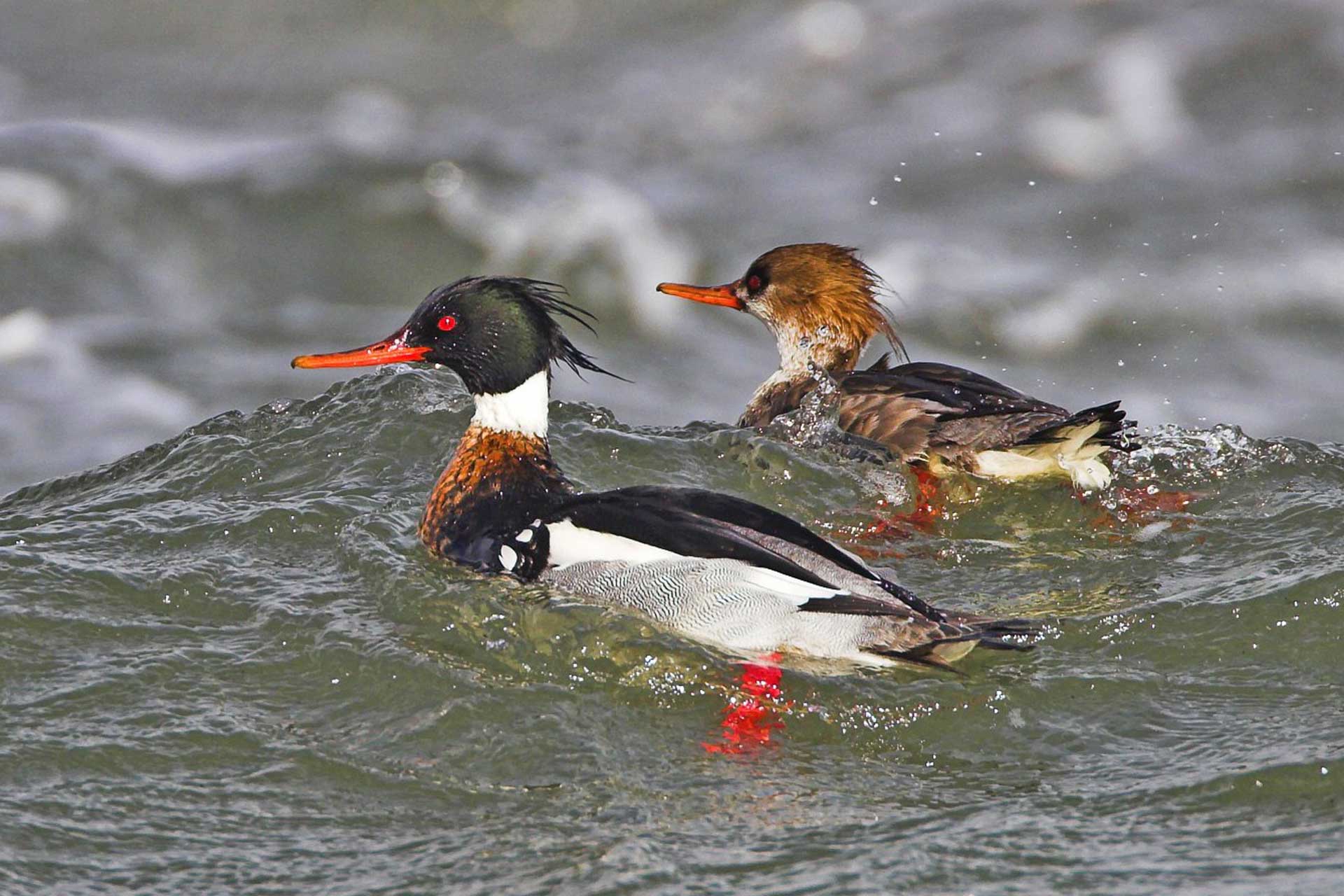Lead Institution(s): McGill University
Project Lead: Rodger Titman
Collaborator(s): Jean-Pierre Savard (CWS), Shawn Craik (MGU), Parks CA, NBWTF, DWF, BU
Focal Species: Red-breasted Merganser (Mergus serrator)
Project Description: Both Red-breasted and Common mergansers have historically been shot illegally in eastern North America while suspected of foraging on fry of Atlantic Salmon. Descriptions of distribution and ecology for these two mergansers have often been given together, with more emphasis on the more abundant Common Merganser. As a result, the Red-breasted Merganser has perhaps been unjustly accused of having an impact on commercial fish populations despite the fact that its often separate role in coastal environments during the breeding and post-breeding periods is not well understood. Specifically, identification and characterization of coastal breeding (nest and brood habitat requirements) and molting habitats for Nearctic Red-breasted Mergansers are lacking. Also, little is known of the population dynamics, including nest and brood survival, of mergansers occurring in marine environments.
This project included studies of breeding mergansers occurred at Kouchibouguac National Park, New Brunswick, Canada from mid-May to mid-September 2002 to 2006. Here, a population of colonial Red-breasted Mergansers nested on 4 small coastal barrier islands. Investigations of molting male mergansers were held throughout the wing molt at 3 coastal bays at the western extremity of Anticosti Island, Quebec, Canada, from early July to mid-September 2005 and 2006.
SDJV51 Interim Report FY04
SDJV51 Interim Report FY05
SDJV51 Interim Report FY06
Related Publications
Craik, S. R., J.-P. L. Savard, and R. D. Titman. 2009. Wing and Body Molts of Male Red-Breasted Mergansers in the Gulf of St. Lawrence, Canada. The Condor 111:71–80. https://doi.org/10.1525/cond.2009.080050
Craik, S., and R. Titman. 2009. Nesting Ecology of Red-breasted Mergansers in a Common Tern Colony in Eastern New Brunswick. WATERBIRDS 32:282–292. https://doi.org/10.1675/063.032.0208
Craik, S. R., and R. D. Titman. 2008. Movements and habitat use by Red-breasted Merganser broods in eastern New Brunswick. The Wilson Journal of Ornithology 120:743–754. https://doi.org/10.1676/07-100.1
Craik, S. R. 2010. Habitat use by breeding and molting red-breasted mergansers in the Gulf of St. Lawrence. Ph.D. Dissertation. McGill University. https://escholarship.mcgill.ca/concern/theses/n296wz55d.
